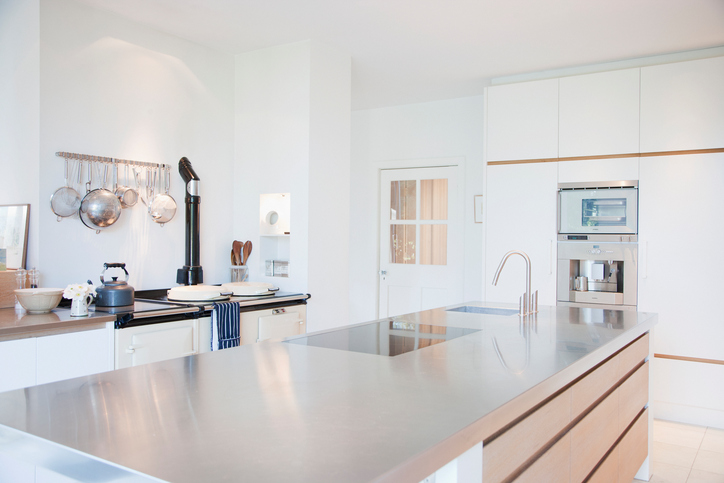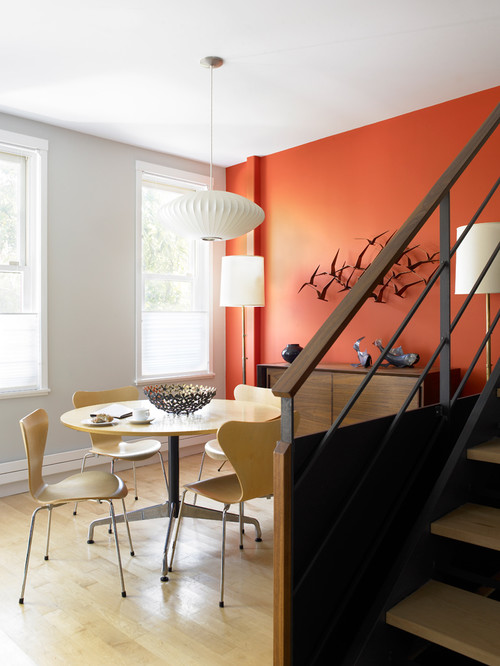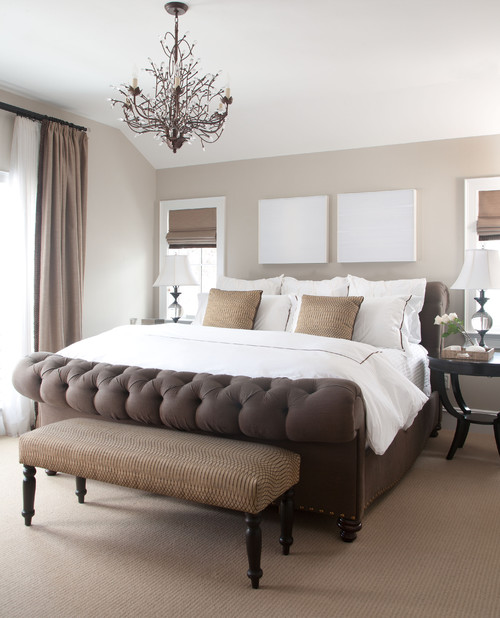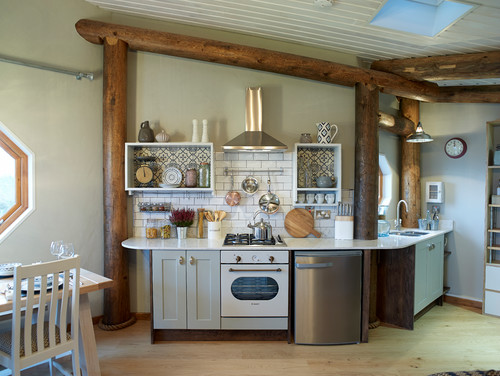Creating the Stadium Experience in Your Own Kitchen

 For some sports fans, there’s more to the game day experience than the game itself. Sure, it’s great to cheer on your favorite team through a white-knuckle competition, but it’s just as fun to explore the smorgasbord of delicious food that every stadium and arena across America has to offer. Food is a big part of the stadium experience, whether you’re sharing a snack with friends or chowing down on a full meal from the comfort of the stands.
For some sports fans, there’s more to the game day experience than the game itself. Sure, it’s great to cheer on your favorite team through a white-knuckle competition, but it’s just as fun to explore the smorgasbord of delicious food that every stadium and arena across America has to offer. Food is a big part of the stadium experience, whether you’re sharing a snack with friends or chowing down on a full meal from the comfort of the stands.
Nachos, chili cheese dogs, cotton candy and pretzels are just some of the classic foods you’ll find spectators noshing on—and don’t forget liquid accompaniments ranging from lemonade to beer. But as tasty as they are, these treats can do a number on your waistline. Fortunately, it’s relatively easy to replicate your favorite game day snacks at home—and with creative and healthy twists—no matter which team you root for.

Hot Dogs
America’s pastime isn’t complete without a ballpark frank—and that goes double for Chicago Cubs fans, who gobble down Chicago-style hot dogs by the thousands each season. Topped with a garden of veggies—including tomato slices, white onion, pickle relish, sport peppers and a pickle spear—a Chicago dog is a much smarter choice than a chili cheese dog. And with a few simple substitutions—like chicken sausage instead of beef, organic veggies, and whole wheat buns—you won’t feel guilty going back for seconds. Or thirds.
Chicken Wings
Buffalo, New York is most famous for three things: the Buffalo Bills, the Buffalo Sabres, and the tangy, spicy, bright orange sauce that works so perfectly on chicken wings. Traditionally, buffalo wings should be fried, but grilling is a healthy and delicious alternative (and baking works just as well). Make sure you have a big stack of napkins for this snack, and don’t forget the celery and bleu cheese.
Peanuts
Peanuts are the perfect handheld snack that can feed tons of sports fans with very little effort. Rich in protein, they can be sweet, spicy, salty or sometimes all three. Southern sports fans have a penchant for boiled peanuts, which can be whipped up in a crock pot, while roasted peanuts have universal appeal.
French Fries
If you’re making fries at home, you might as well kick it up a notch. Northern California is famous for its garlic and, as a result, its garlic fries. So it comes as no surprise that the dish is one of the most popular menu items at San Francisco’s AT&T Stadium, home of the Giants. If you follow this recipe, you won’t even need a deep fryer.
Pretzels
If there’s one thing New York Yankees and New York Mets fans can agree on, it’s that a baseball game isn’t complete without a soft pretzel and a side of spicy mustard. But if you’re gluten intolerant, you often miss out on this handheld treat. Luckily, pretzels are surprisingly easy to make at home—even without the wheat.
Nachos
Stadium nachos are notorious for their neon yellow cheese sauce and a few other suspicious toppings. At home, you can load up your tortilla chips with whatever you want. Miami fans swear by Cuban-style nachos, which add a Caribbean twist to the traditional recipe by topping gluten-free tortilla chips with slow-cooked pork, ham and a light Swiss cheese sauce.
Cracker Jacks
By the time the seventh-inning stretch rolls around, you’re going to be craving something sweet—that’s the real reason Cracker Jacks are prominently featured in “Take Me Out to the Ball Game.” By substituting sugar with maple syrup, you can make caramel corn that’s as good as the Cracker Jacks you remember from childhood baseball games—but without all the calories (or, sadly, the toy surprise).
Lemonade
After all the hot dogs, peanuts and other snacks, you’re going to need something to quench your thirst. With just three ingredients—lemons, water, and honey—you can make ballpark-park quality lemonade at a fraction of the price.
Once you’ve gathered your snacks and turned on the game, it’s easy to recreate the stadium experience at home. Just gather your favorite sports fans, sit back and dig in.
Source: CB Blue Matter Blog
Fastest Remodels that Make the Most Impact


Here are a few big-picture renovations you can make in surprisingly little time, whether you do it yourself or hire help.
Guest Post by Lauren White
Remodeling projects can seem like a distant fantasy when days off are usually consumed by errands and chores. What can you accomplish with the slim hours you have to spare? Here are a few big-picture renovations you can make in surprisingly little time, whether you do it yourself or hire help.
Instant Patio
Time: 4-6 hours
Budget: $3,000
Outdoor spaces are deceptively quick and affordable to make. If you have a half-day to spare, you can turn a patch of yard into a gorgeous patio before sundown. The processwill involve digging and leveling the area you need, preparing a base for proper drainage and laying your stones. Once the project is complete, you will have a relaxing outdoor living space to enjoy.
Keep your time down by choosing pavers or bricks that don’t need to be cut. Interlocking patio pavers come in many variations and they eliminate the dilemma of fitting awkward pieces together.
One-Day Backsplash
Time: 2-8 hours
Budget: $30-$600
It only takes a few hours to install a new kitchen backsplash, but it could take less time depending on the material you choose. If you paint the backsplash, it will take mere hours of preparation and application. Painting costs as little as $30. If you use peel-and-stick ceramic tiles or rolls of faux metal, it will take roughly the same amount of time.
If you have more than a few hours, make a stand-out backsplash using an adhesive tile mat and individual tiles. The adhesive mat will ensure that heavy tile materials don’t fall off, and requires less curing time than traditional, wet adhesive. Explore your tile options in HomeAdvisor’s resource center.
Weekend Window Replacement
Time: 2-3 days
Budget: $5,000
High-efficiency windows are a strong investment, whether you are planning to sell or stay. These windows save homeowners anywhere from 10% to 30% in home energy costs. Efficiency is a top priority for today’s buyers, and this project has over 70% return on investment.
Removing old windows, installing heavy panes and finishing up with framing is a complex process. Professionals can do it in a matter of days, where it might take you much longer. Hiring a pro is worth it, because this renovation will put money back in your pocket when it is done right.
72-Hour Countertops
Time: 1-3 days
Budget: $3,000
In most cases, you’ll want to hire a professional to replace your countertops. Installation and cutting needs to be very precise, and most counter slabs weigh up to and over 400 lbs! With the right amount of muscle, you can finish this job in 1-3 days. Some materials and pre-fabricated pieces can even be installed in 3-7 hours.
Upgrading your countertops can do wonders to improve your kitchen and raise your home value. Granite, for example, can handle a lot of wear-and-tear. If your kitchen is like the Union Station of your house, this low-maintenance, high-resistance material is perfect for your counters.
For the adventurous weekend warrior, check out these countertops you can make yourself.
Two-Week Hardwood Floor Refinishing
Time: 2-14 days
Budget: $1,600
Flooring has a big impact on the appearance and value of your home. If your hardwood floors are in bad shape, you’ve probably already thought of refinishing them. Whether you hire a professional or do it yourself, you’re going to need at least two days.In fact, you may need as many as fourteen.
You will need one day for sanding and one day per layer of polyurethane finish. Each layer will need 24 hours to dry. Two to three layers of finish are recommended. If you’re going to stain the wood, add another day for that between sanding and finishing.
This project may take longer, but the results are worth it. Refinishing seals the wood against rot and moisture, and adds appeal for homebuyers. They will be more impressed by a glossy shine than rough, exposed wood. If you’re not sure it’s the right time for your floors, check out these answers to common questions to help you decide.
Investing in your property can mean a faster sale, or will at least give you a few extra luxuries to enjoy. See what you can accomplish with an afternoon or your next three-day weekend, and format your budget using these helpful cost guides.
Lauren White is a freelance writer who enjoys reading, hiking and traveling. She can usually be found on an outdoor adventure with her boyfriend and little sister on the weekends.
References
- www.bhg.com/home-improvement/remodeling/budget-remodels/weekend-home-projects/
- www.houselogic.com/remodel/remodeling-tips-advice/house-remodeling-how-long-does-it-take/
- www.fix.com/blog/tile-kitchen-backsplash-in-one-day/
- www.thespruce.com/easiest-and-cheapest-backsplashes-1821174
- www.popularmechanics.com/home/outdoor-projects/a22394/how-to-build-a-bluestone-patio/
- www.thespruce.com/process-of-installing-replacement-windows-1822901
- www.replacementwindowsfordummies.com/articles/energy-efficient-windows-advantages-and-disadvantages
- www.remodeling.hw.net/cost-vs-value/2017/
- www.valentiflooring.com/blog/hardwood-floor-refinishing-project-how-long-does-it-take
- www.thespruce.com/cost-to-refinish-hardwood-floors-1314853
- www.homeadvisor.com/r/refinishing-hardwood-floors/
- www.rempros.com/estimating-time/kitchen-countertop-replacement.html
- www.diynetwork.com/how-to/rooms-and-spaces/kitchen/how-to-install-a-granite-kitchen-countertop
- www.homeadvisor.com/cost/kitchens/tile-backsplash-install/
- www.homeadvisor.com/cost/outdoor-living/install-a-patio-or-pathway/
- www.homeadvisor.com/cost/doors-and-windows/install-windows/
- www.homeadvisor.com/cost/flooring/refinish-wood-flooring/
- www.homeadvisor.com/cost/cabinets-and-countertops/install-countertops/
How to Keep a Small Kitchen Organized


Everyone LOVES a big kitchen. Lots of room to whip up your culinary delights! The truth is that anyone can adjust and create beautiful meals in a small kitchen. Its all in the organization!
It can be tricky keeping a compact cooking space tidy, but these ideas can help keep a small kitchen organized.
Contrary to what you might think, you don’t need acres of counter space or dozens of drawers and cupboards to have an organized kitchen that’s a joy to cook in. If anything, a smaller kitchen can encourage you to streamline your stuff and live more simply. Who wants cabinets chock-full of unloved pasta machines and dusty bread makers anyway? Check out these easy ways to restore order to your less-than-enormous kitchen.
1. Start with a utensil rack. Not only will it give you a place to hang slotted spoons and ladles for easy access while cooking, it will also free up precious drawer space.
Even in the tiniest kitchen, you can usually find somewhere to squeeze one in — under a cupboard or shelf or above the stove. Stainless steel models work in most styles of rooms and are easy to wipe down.
2. Get a knife holder. A knife block or magnetic rack is one of those simple items that really do make a difference in how functional your kitchen is. After all, rummaging around in a drawer for a piece of kitchen gear you use frequently is time-consuming and dispiriting.
A wall-mounted rack like this one keeps things orderly without swallowing too much space. Buy decent knives if you can afford it, as they should last a lifetime. One advantage of a magnetic rack is that you can slowly build up your collection of knives, buying one at a time, rather than having to invest in one large block complete with knives, which can be pricey. If you’re starting from scratch, a bread knife, paring knife and chef’s knife are essential.
3. Assign dedicated storage areas. Kitchen clutter can easily accrue, so it makes sense to assign different cupboards a specific purpose and stick to it. And dedicate a few minutes every couple of weeks to returning stray plastic lids or pot covers to their homes and sweeping out spilled spices and coffee grounds — it really will make a difference in how pleasurable (and easy) your kitchen is to use day to day.
4. Reduce your numbers. If your kitchen is really mini, or even if it isn’t, think about doing a good edit of your paraphernalia. Be honest: Do you really need more than a handful of plates, mugs or glasses if there are only one or two of you?
Having less stuff can be immensely freeing — and will significantly reduce the amount of time you spend washing up, which is a big bonus.
5. Gather and display. This cute kitchen demonstrates how you can be organized and chic at the same time. A charming crock to hold wooden spoons, a wall-mounted crate or two to provide a home for vintage-style scales and jugs, a small wall-mounted spice rack — they all add a pretty touch as well as having a practical function.
6. Be clever with your cabinets. Use every spare inch in a small kitchen by building recessed shelves where feasible. Here, they surround an integrated refrigerator. With this design solution, wall space that’s too skinny or awkwardly shaped for extra cabinets can still be used to hold frequently used items. In this kitchen, it also helps open up the room and leads the eye to an appealing feature.
The other clever feature in this kitchen is the cookbook niche above the door — another neat storage trick that doesn’t take up too much room. Ask a builder if one can be carved out from an existing wall.
7. Go minimal. Are you in the process of picking new cabinets for your compact kitchen? Consider this look. Ultra-plain, handleless cabinets in a nude hue are soothing to look at and give a sense of visual order. Pick a seamless backsplash such as this slab of marble, since tiles with grout can look busy.
8. Get in a tight corner. When space is tight, an ingenious trio of pullout corner drawers is a lifesaver, helping to solve the problem of lost space in those awkward-to-access base cabinets.
If you’re remodeling, think about how you’d use such drawers — for cutlery, towels, pans, dishes? Here, a slimmer top drawer is complemented by the two deeper ones, so all the bases are covered.
9. Put the pans away. Similarly a pullout pan rack can be a gift in a small kitchen, creating an organized home for frying pans and saucepans and keeping you from tearing your hair out as you hunt around in the backs of cupboards. Also try using racks for items such as steamers or large, unwieldy casserole dishes.
10. Organize inside. It may sound like a no-brainer, but often what makes a kitchen, big or small, organized is how we arrange the insides of our cupboards. Shelf and drawer dividers, hooks, racks and other storage devices are key to keeping order. Consider what works for you and go custom if you can. Are you a Mason jar and Tupperware kind of person? Do you prefer mugs on hooks, shelves or in drawers? Storage is often about personal preference. Here, the slim slots for chopping boards and placemats are a brilliant idea, as is the slim pullout spice rack.
Source: CB Blue Matter / Houzz

 Facebook
Facebook
 X
X
 Pinterest
Pinterest
 Copy Link
Copy Link




































